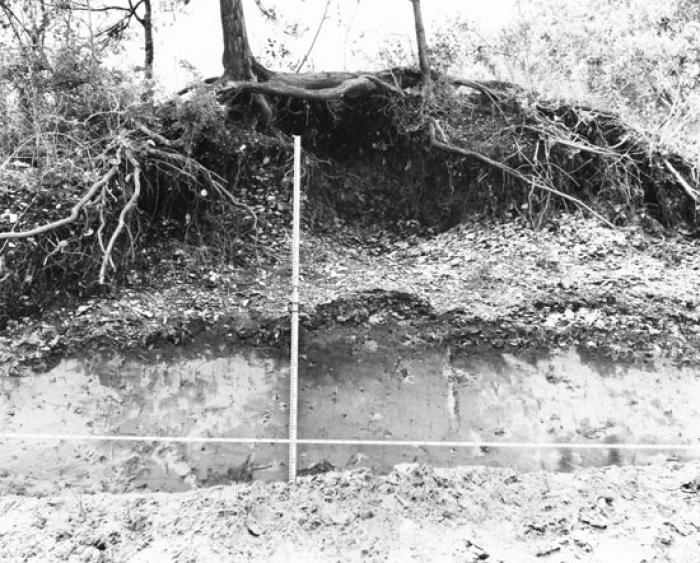
A blog post by Joseph Wilkinson
To most people the concept of archaeology brings to mind images of pyramids and lost treasures hidden in ancient tombs, filled with booby traps and only accessible by rough terrain. This image is common thanks to Indiana Jones and Laura Croft, among many other Hollywood renditions of archaeological expeditions. Some even think of dinosaurs or fossils of other ancient creatures. While there is some small truth to the first image in exceedingly rare circumstances, the second image is almost completely false. Ancient tombs and “treasure” do occasionally enter into archaeological studies, but are the exception rather than the norm. Dinosaurs are the topic of study in Paleontology, not archaeology, though in very rare cases the two disciplines have some overlap. Such as in the study of Ice Age megafauna where humans may have left artifacts in association with hunting an ice age creature. Again, the rare exception and not the norm.
What can we learn through archaeology? How does archaeology really work? Where can archaeology be done? What does archaeology do for us?
Archaeology is specifically the study of the human past. Archaeology can be conducted using many different methods and approaches, all of which seek to learn more about the human past. Most archaeology includes on some level, digging. Archaeologists dig a lot, because that is where many material remains of the human past have been left behind in various conditions. In the case of pyramids and other still extant structures, archaeology can utilize structural remains and even historical documents to uncover clues about the past. Unlike most historical research though, archaeology doesn’t seek to just uncover and interpret facts about past human events. Archaeology seeks to understand past human societies through the everyday mundane, as well as extraordinary and unique, behaviors that people exhibited and their experiences in the past. Think of it sort of like reading between the lines of an historical text, or in the cases where no historical texts exist, creating knowledge that would help write such a history. Archaeology wants to know the big stuff about past human lifeways, but it wants to know the little stuff too. All the ordinary things people take for granted, and would not have even occurred to people to document.
To archaeologists, artifacts are like puzzle pieces. Each artifact represents the result of a past human behavior, some sequence of decisions that created, utilized, and lost or discarded that artifact. In order to know how to put the puzzle pieces together and learn about the people who made and used them, archaeologists need to know the specific context in which the artifact was found (which is ideally also exactly where the artifact was lost or left in the past). Context is also important in order to understand an object’s relationship with other artifacts and features at an archaeological site and the behaviors that created those end results. For example, in prehistory artifacts made of stone were often made from stone from specific sources and then were transported across the landscape to different destinations. At the Kolb site in South Carolina (Figure 1), where 13,000 years of cultural history has been uncovered, this has been seen throughout much of the prehistoric occupations there. The Native Americans who visited the Kolb site often brought with them artifacts made from distant sources, and while using them at the Kolb site for various tasks, created debris from the use of those tools which can be studied to learn more about what people were doing there, where they had come from, and where they may be going next based on what was brought to Kolb and what may have been taken away from there.
Not only can archaeologists interpret people’s movement across the landscape, but also a great deal about how people used space and created campsites or structures for temporary or long-term stays. Imagine if all of the objects in your house were all mixed up and in a pile. Could you learn anything about the organization of the rooms in your house, or what each room was used for? Now imagine your house tidy and in order with objects where they belong: pots, pans, dishes, and cutlery in the kitchen; TV remotes, coasters, and couches in the living room; lamps, dressers, beds in the bedrooms; and hair brushes and tooth brushes in the bathrooms. The spatial relationships and existence of objects in certain places could tell someone who has never seen a modern American household before, a great deal about how we organize and use our space, as well as what kinds of objects we use to accomplish different tasks. Similar interpretations can be applied to archaeological sites as well, such as is being done at Pockoy Island in South Carolina (Figure 2). South Carolina Department of Natural Resources (SCDNR) archaeologists have been closely studying the Late Archaic shell rings on Pockoy in order to understand more about how it was created and used approximately 4,000 years ago. This site is quickly eroding away, but thankfully a lot of invaluable information about the site is being salvaged for research.
Archaeologists are just like detectives. Detectives work backwards from the end result to learn more about the “how” the “when” the “why” and of course “who.” Archaeologists take the same approach, but instead ask a lot more questions in order to not only understand and interpret the site they are studying specifically, but also so that it can be compared to other assemblages and sites or other time periods. This allows us to learn more about overall patterns of cultural change that otherwise we would not know much about.
Archaeology can be done anywhere humans have previously been. It helps of course if those humans left artifacts or signs of being there that have survived through time. Sometimes though, archaeologists can study the landscapes surrounding artifact-bearing sites also, and learn a lot about why the sites are located where they are, and how people were using the landscapes in different areas. Archaeologists can also study many things other than artifacts that also provide clues. The soils in which artifacts are buried can tell archaeologists more about how the artifacts may have moved or remained stable after being left there. Blood and chemical residues on artifacts or soils could tell archaeologists more about how specific artifacts are being using and what they may have been eating. Burned plant and animal remains can be carbon dated or classified to learn more about the ecology of the area and what people were exploiting for food and other purposes. Microscopic remains of pollen and other plant remnants can also provide clues as to the local environment at different periods of time, and the list goes on.
Here in South Carolina we have at least 14,000 years of cultural history beneath our feet that can be studied through archaeology, and some would argue much more. To date over 30,000 archaeological sites have been documented here in South Carolina, a number which grows everyday, and includes all kinds of prehistoric and historic period sites. Among them some sites are especially important, and archaeologists have worked hard to learn about past cultural periods by carefully studying these sites, often including the public along the way.
The Kolb Site, as mentioned above, has 13,000 years of cultural history present. Prehistorically Native Americans repeatedly visited the Kolb Site and camped there while hunting and fishing in the surrounding environment. In historic times, it was also the home of Johannes Kolb, a German immigrant to South Carolina, and the site later held remnants of a local plantation.

Pockoy Island is a SCDNR owned property that is a part of the Botany Bay Heritage Preserve. Present on the island is an extensive Late Archaic period shell ring and associated features. Approximately 4,000 years ago Native Americans inhabited the island and exploited many naturally available foods, especially shellfish. The consumption of shell fish created an abundance of shell which they turned into tools and built a ring of debris. Archaeological work there is focusing on understanding both how and why the ring was built, and how people were living there at the site.

Spanish Mount is another Late Archaic period site in South Carolina also owned and managed by SC Parks, Recreation, and Tourism, "SCPRT" (Figure 3). Instead of a ring, this site is a large mound of discarded shell that was also created by Native Americans approximately 4,000 years ago. Archaeological work here has focused on understanding why this site is different, and saving valuable information before it too is lost to coastal erosion.

Collectively, archaeological studies shed light on our past, the challenges humanity has overcome, the ways in which people have interacted and clashed, and how societies grew into being and later collapsed. Archaeology embraces and illuminates our cultural histories in a very unique way that no other approach is capable of. There is an immeasurable amount of history that can be written through archaeology, and it is important for us all to protect and preserve the archaeological resources that remain with care and responsible stewardship.
Often there are opportunities to become involved with archaeological projects through volunteering. There are also many ongoing archaeological projects that often benefit from the generous support of the interested public. Here in South Carolina there is also the Archaeological Society of South Carolina whose membership is comprised of professional archaeologists, avocational archaeologists, and interested members of the public. One does not need to become a professionally trained archaeologist in order to contribute to our understanding of the past, all that is needed is the careful stewardship and protection of archaeological sites and artifacts that you may encounter. Carefully document exactly where objects are found and be careful not to disturb intact archaeological sites, as the information that could be gleaned from them is impossible to replace and learn from once it is lost. If you are interested in archaeology, find ways to become involved and support our state’s archaeological organizations and projects. The archaeological record, in one way or another, belongs to all of us, and it will take all of us to learn from and protect it.
